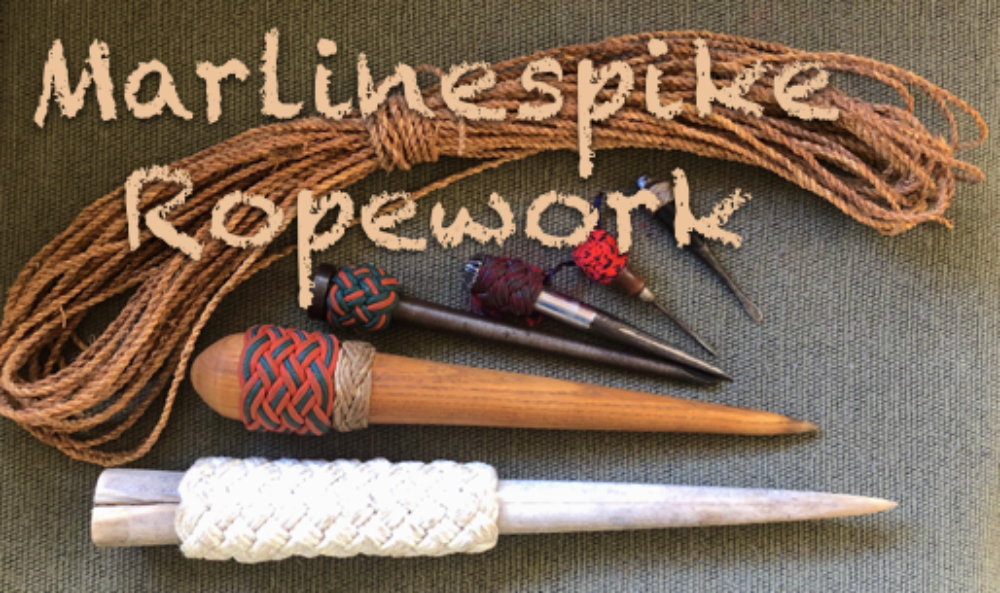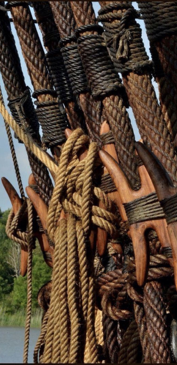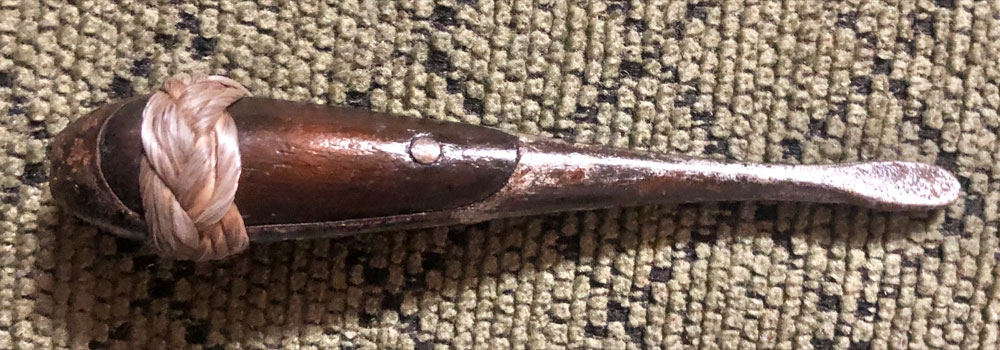
A life-long love of knots and marlinespike ropework, for me has been a fascinating gateway into the science, math, and engineering of knots and ropework, the incredible, creative beauty of historic decorative and functional marlinespike seamanship and the role its played in the history of civilization spanning many thousands of years.
Marlinespike seamanship or ropework is the art, science and skillset spanning the use, maintenance, and repair of rope, including knotting, splicing, lashing, whipping and storage.
While the skill of a sailor in the Age of Sail was often judged by their knowledge of marlinespike seamanship, the incorporated knowledge and understanding required for docking a craft, securing loads, hoisting, towing and making repairs while underway is still critical for modern seafarers.

Wonderful marlinespike work aboard the reproduction 1779 Concord-class frigate Hermione, which achieved fame by ferrying the French General La Fayette to the United States in 1780, where he rejoined Washington’s troops and was instrumental in the Battle of Yorktown at the end of the American Revolutionary War.
A Marlinespike is a tapered, conical tool long used in marine ropework. The marlinespike’s name is derived from marline, thethin but strong, waxed line of two-twisted strands used to “marl,” or wind around the ends of larger rope with a hitch at each turn, to seize or form a protective whipping to prevent unraveling or fraying. In centuries past, to keep this thin but essential line from rotting when exposed to seawater, it was not waxed but tarred.The only way to loosen the tarred marline from a rope was to pick the marline free with a spike which was also used as a handle when marling or whipping to tighten the hitch at each turn. Thus the spike became known as the “marling spike” or in seafaring usage, a marlinespike.
The art, science and skillset of knotting and ropework is one humanities oldest, stretching back thousands of years, well before the ancient Egyptians. However, commercial shipping has always employed a minimal crew with very little discretionary time, so it wasn’t until the advent of large maritime navies and particularly the practice of whaling, both of which needed a surge capacity of crew not just to “sail the ship,” but to “fight the ship” or process a whale, that crew had the intermittent “free time” to develop the beautifully intricate decorative knotting that marlinespike seamanship came to be known for over the last two centuries.

With the advent of wire cable, the marlinespike has come to refer to a spike made of iron or steal, which could open a wire cable for splicing, and a similar spike made of wood, bone or ivory is called a fid.
Living in the middle of the Pacific, with its long history of whaling, I for years assumed the marlinespike was named for the marlin, swordfish or billfish of the same name, from whose “sword” a good marlinespike or fid can be fashioned. My marlin sword bill was given to me by a friend, Dr. Andrew West, a marine biologist and one of the world’s foremost authorities on marlin. But I had assumed wrong, as the term marlinespike was used by seamen long, long before, and the giant billfish was named for its resemblance to the tool most sailors commonly used.
A fid is usually made of wood, bone or ivory and is used to hold open knots and holes in canvas, and to separate the “lays” (or strands) of synthetic or natural rope for splicing. It adds a jamming cleat to pull a cord back through the cord split by the fid’s point.
Modern fids are typically made of aluminum or plastic, but historically they were made of the hardest, densest wood known at the time: .
In addition to holding rope open to assist the creation of a rope splice, modern push fids have markings for precise measurements in a variety of sizes of rope. The length of these fids is typically 21 or 22 times the diameter of rope to be spliced. A half-inch diameter rope would have any accompanying fid 10.5–11″ in length with hash-marks denoting the long and short fid measurements. A short fid is 1⁄3 a fid length and a long fid is 2⁄3 the overall fid length.
The Marlinspike is used in such tasks as unlaying rope for splicing, untying knots, drawing marline tight using a marlinspike hitch, and as a toggle joining ropes under tension in a belaying pin splice.
Most marlinspikes are 6–12 inches (15–30 cm) long, but may reach 2 feet (61 cm) and more for working heavy cables and ropes. They are usually made from iron or steel, whereas fids, similar in shape and function, are formed from wood, bone or ivory. Both could be used as an improvised weapon to repel hostile boarding parties. Small marlinspikes were eventually included as a tool on many sailing related pocket knives. Sailors who become proficient at knot tying, splicing, and sewing using the marlinspike are said to have mastered marlinespike seamanship. 1.
L’hermione’s rigging. Shrouds, cleats, seizings, hanging coils. Photo by Christopher Bartlet
Wonderful marlinespike work aboard the reproduction 1779 Concord-class frigate Hermione, which achieved fame by ferrying the French General La Fayette to the United States in 1780, where he rejoined Washington’s troops and was instrumental in the Battle of Yorktown at the end of the American Revolutionary War.
Webster’s New World College Dictionary, 4th Edition. Copyright © 2010 by Houghton Mifflin Harcourt.